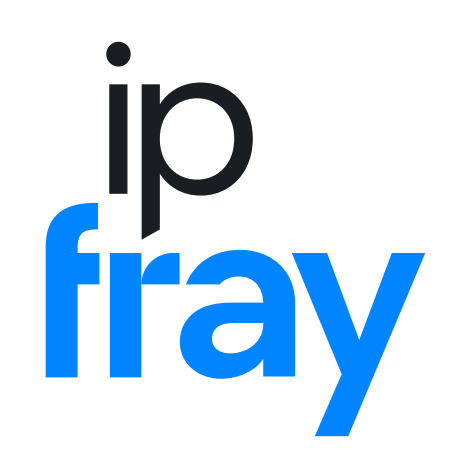Context: Current as well as former U.S. government officials have repeatedly expressed concern over the proposed EU regulation on standard-essential patents (SEPs) and its potential impact on innovation and national security in the Western world. Earlier this month, ip fray reported on a memorandum signed by the United States Patent & Trademark Office (USPTO) and the Intellectual Property Office of the United Kingdom (UKIPO), and stated based on unnamed sources that one of the objectives of that alliance was to jointly dissuade the EU from regulatory overreach (June 7, 2024 ip fray article). In response to that article, the UKIPO denied that there were any advocacy goals, which ip fray duly incorporated into the article while standing by its reliance on third-party information. The USPTO did not comment.
What’s new: Yesterday, the National Institute of Standards and Technology (NIST), which is the U.S. government agency overseeing standards development, published a request for feedback on an implementation roadmap for the U.S. government’s strategy for critical and emerging technologies (June 26, 2024 NIST announcement). Those include many technologies, among them AI and next-generation wireless networks. On LinkedIn, USPTO Director Kathi Vidal shared two passages from a proposed implementation roadmap that relate to the USPTO’s efforts to “engage with foreign governments” in order to defend fair, reasonable and non-discriminatory (FRAND) licensing of SEPs on the global stage.
Direct impact: While the EU SEP Regulation is not mentioned specifically, there can be no reasonable doubt (in light of the overall context and prior statements by U.S. officials) that the U.S. government will continue to try to dissuade the EU from making a mistake that undermines standards-related innovation.
Wider ramifications: The final bullet point of the USPTO-UKIPO memorandum on SEPs (“Discuss means to incorporate additional jurisdictions into the USPTO’s and the UKIPO’s activities concerning SEPs, including exploring a venue for such broader discussions”) can reasonably be interpreted in light of the U.S. government’s clear positioning. If the UK disagreed with the U.S. in this regard, there likely would not have been the memorandum in question, or at least not that bullet point referring to “additional jurisdictions.” At minimum, it appears that the U.S. and the UK seek to build a Coalition of the Balanced.
Here’s the text of the USPTO Director’s LinkedIn post:
National Institute of Standards and Technology (NIST) seeks public input on draft roadmap for USG National Standards Strategy for Critical and Emerging Technology. They are requesting comments by July 12, 2024. ⏳
📢 Draft Implementation Roadmap: https://lnkd.in/gahxAC7C
2.4 Continue to engage with foreign governments to provide balance and efficiency around FRAND licensing.
Appendix B: The USPTO—America’s Innovation Agency: Some standards developing organizations (SDOs) provide policies allowing for the incorporation of patented technology in a technical interoperability standard. Often those SDOs seek the widespread and efficient licensing between standards essential patent (SEP) holders and those who seek to implement standardized technologies by requiring licensing on fair, reasonable and non-discriminatory (FRAND), or similar, terms and conditions. FRAND licensing promotes technological innovation, furthers consumer choice, and enables industry competitiveness. This is especially true for emerging technologies and market entry of new and small-to medium-sized entities, whose participation in the standards ecosystem is important to promoting innovation and job creation in today’s dynamic marketplace. To support these objectives and the FRAND ecosystem, the USPTO plans to continue to engage with foreign governments to provide balance and efficiency around FRAND licensing.
📢 USG National Standards Strategy: https://lnkd.in/gkwy_izx
To avoid confusion, both item 2.4 and the paragraph on the USPTO are from the same document (PDF). Item 2.4 is found on page 15, and the passage from an appendix is found on page 23 (right-hand column).
The U.S. government published a strategy for critical and emerging technologies (CET) in May 2023 (PDF). It was updated in February 2024 (PDF).
This is a list of the main CET categories:
- Advanced Computing
- Advanced Engineering Materials
- Advanced Gas Turbine Engine Technologies
- Advanced and Networked Sensing and Signature Management
- Advanced Manufacturing
- Artificial Intelligence
- Biotechnologies
- Clean Energy Generation and Storage
- Data Privacy, Data Security, and Cybersecurity Technologies
- Directed Energy
- Highly Automated, Autonomous, and Uncrewed Systems (UxS), and Robotics
- Human-Machine Interfaces
- Hypersonics
- Integrated Communication and Networking Technologies
- Positioning, Navigation, and Timing (PNT) Technologies
- Quantum Information and Enabling Technologies
- Semiconductors and Microelectronics
- Space Technologies and Systems
Each of those main categories has subcategories. For Integrated Communication and Networking Technologies, the following subcategories are listed, with the most important one from a regulatory point of view (wireless, which is where most of the money is) highlighted below (but not in any original document);
- Radio-frequency (RF) and mixed-signal circuits, antennas, filters, and components
- Spectrum management and sensing technologies
- Future generation wireless networks
- Optical links and fiber technologies
- Terrestrial/undersea cables
- Satellite-based and stratospheric communications
- Delay-tolerant networking
- Mesh networks/infrastructure independent communication technologies
- Software-defined networking and radios
- Modern data exchange techniques
- Adaptive network controls
- Resilient and adaptive waveforms
This is not a question of U.S. versus European strategic interests. The U.S. has Qualcomm, InterDigital and a few others, and Europe has Ericsson, Nokia and some others as well. Both the U.S. and Europe have many automakers and IoT companies.
In the end it’s all about striking the right balance. Director Vidal didn’t suggest that SEPs should be overleveraged and overcompensated. It’s just that the FRAND licensing system should not be damaged (or even destabilized) for no good reason.
